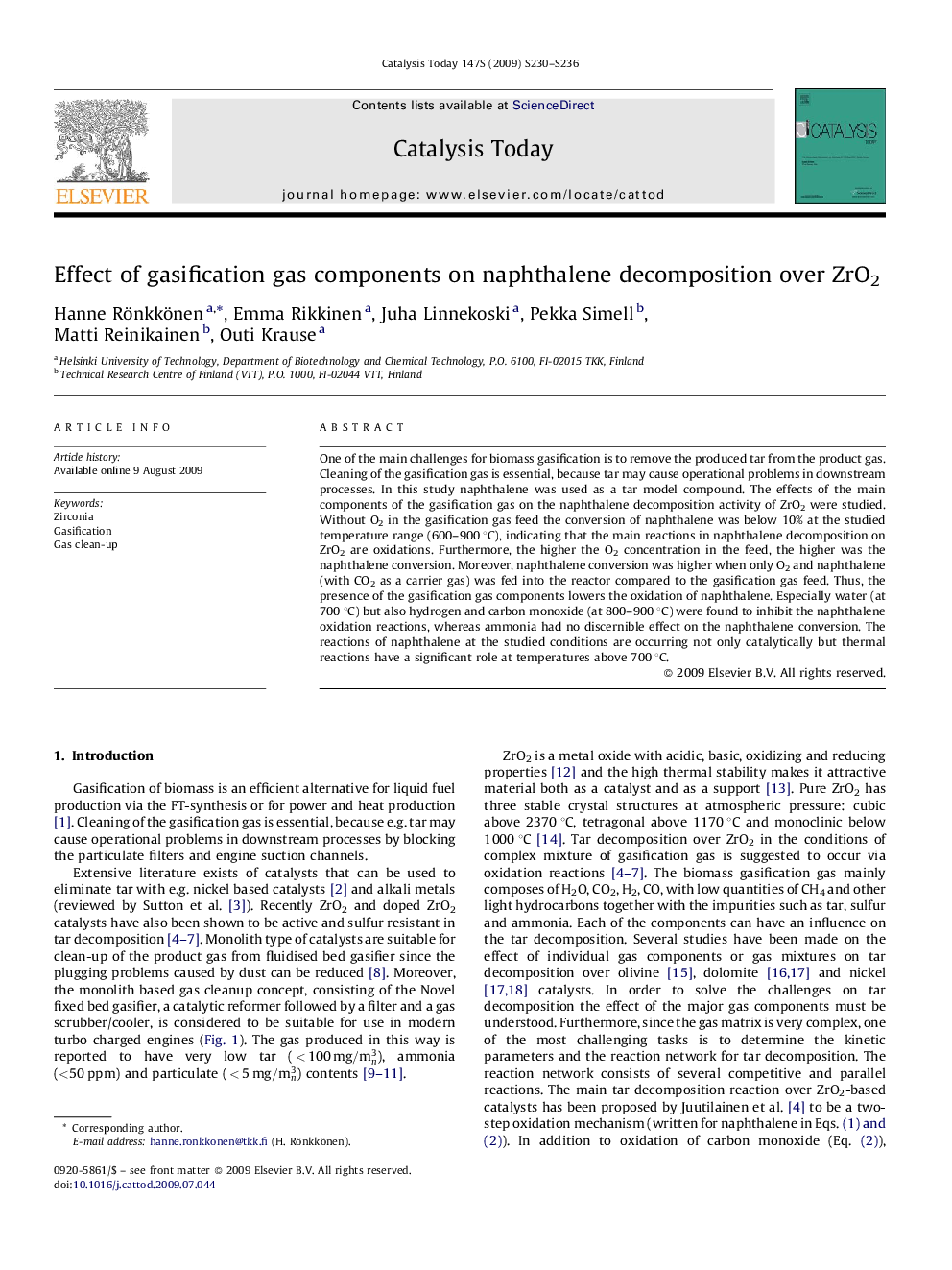| Article ID | Journal | Published Year | Pages | File Type |
|---|---|---|---|---|
| 57099 | Catalysis Today | 2009 | 7 Pages |
One of the main challenges for biomass gasification is to remove the produced tar from the product gas. Cleaning of the gasification gas is essential, because tar may cause operational problems in downstream processes. In this study naphthalene was used as a tar model compound. The effects of the main components of the gasification gas on the naphthalene decomposition activity of ZrO2 were studied. Without O2 in the gasification gas feed the conversion of naphthalene was below 10% at the studied temperature range (600–900 °C), indicating that the main reactions in naphthalene decomposition on ZrO2 are oxidations. Furthermore, the higher the O2 concentration in the feed, the higher was the naphthalene conversion. Moreover, naphthalene conversion was higher when only O2 and naphthalene (with CO2 as a carrier gas) was fed into the reactor compared to the gasification gas feed. Thus, the presence of the gasification gas components lowers the oxidation of naphthalene. Especially water (at 700 °C) but also hydrogen and carbon monoxide (at 800–900 °C) were found to inhibit the naphthalene oxidation reactions, whereas ammonia had no discernible effect on the naphthalene conversion. The reactions of naphthalene at the studied conditions are occurring not only catalytically but thermal reactions have a significant role at temperatures above 700 °C.
